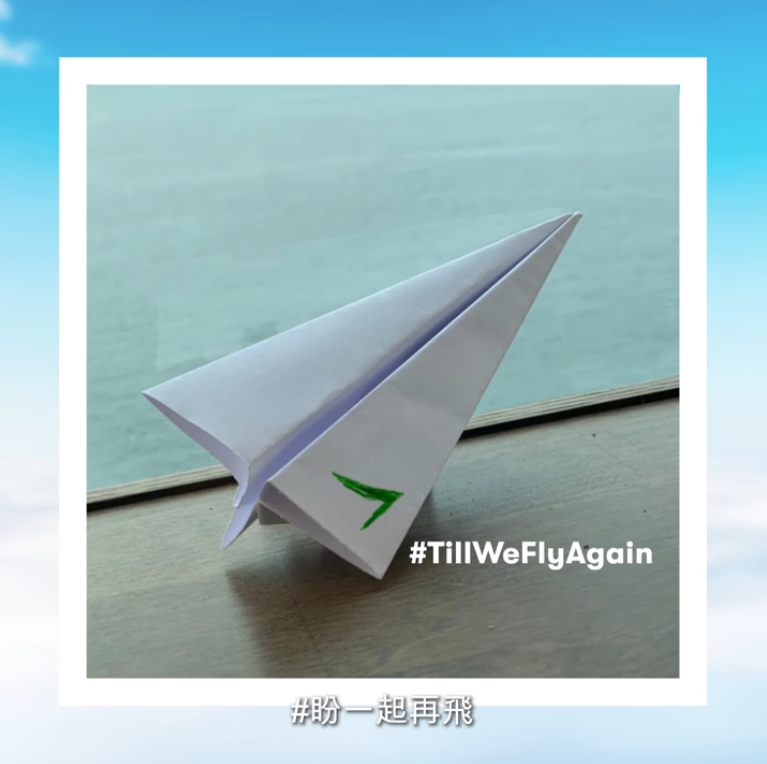COVID-19 grounded Cathay Pacific, but the global airline is looking ahead to when it can take to the skies once more. Edward Bell – GM of Brand, Insights and Marketing Communications – speaks to WARC’s Gabey Goh for the Marketer’s Toolkit 2021 about supporting the needs of consumers, silver linings, and why branding is a crucial differentiator.
The travel industry has been hit harder than most by the global pandemic, how has the Cathay Pacific marketing team navigated through such a turbulent year?
I think one thing that you get in airlines is, what people are telling me and I'm starting to understand, is that there's always a crisis. That's how airlines are. Because it's such a dynamic space, there are so many reasons and ways that [there can be] some trouble or controversy.
For us at Cathay Pacific, and also in Hong Kong, we’ve been going through a lot of change for the last 10 years. It's not just the last couple of years; Hong Kong is changing and its relationship with China is changing. In the airline space, we have to be able to adapt. It's just something that airline people, in general, have in their DNA.
Everyone's got an opinion about airlines in a way that they don't really have opinions about cars. There's probably no category that elicits such strong opinions as airlines do. It's a very curious thing, we're almost like the middle of a conversation for so many people. Our brand, our mood and everything kind of rises and falls or changes by virtue of that conversation. There are just so many parts that influence that… The average person doesn’t fly that much but everyone's an expert when it comes to an airline.
Key insights
- The pandemic is an opportunity for brands to take a pause, gain clarity on what their priorities are and be the springboard to the next great chapter.
- Brands need to communicate with both the expressed and unexpressed needs of consumers in these complicated times. Understanding firstly that people have hygiene worries, but their needs are also broader than just those worries.
- Marketers have the responsibility to ensure that their organisation understands that the future of marketing lies beyond digital infrastructure and investments. That some fundamentals, such as the power of brand and content, do not change.
How did the team deal with the COVID-19 crisis specifically?
To start with, it was to deal with the most tangible and existential threats or dangers, which is the perception of safety and hygiene and procedures. It's all about understanding what people are worried about and then for us, changing or adding layers of cleaning. For example, people in our catering service were wearing one hairnet, now they’re wearing two.
We doubled down on everything that we were doing, and what we realized was that it's necessary – but not sufficient – to deal with the psychology of people. It's not just about taking care of the perceived dangers of airline travel, but what a lot of people were dealing with was the fact that they can't travel anymore. For people who travel a lot, for some of them, it became a relief to not travel, but for others, they really enjoyed the travel experience and were losing a huge part of their life.
What we wanted to do was tell people that we know that. So we came up with a small campaign “till we fly again”, which was just about the inspiration in your daily life that reminds you of the things beyond your home.
There are the conscious worries and then you have the deeper subconscious things which are harder for people to express, but a lot of people feel. A lot of people would say “I really want to travel again” but not a lot of people say, “I really miss planes” because that sounds ridiculous, but we know that people are missing the plane. What we try to do is to communicate to those different needs that people have.

Edward Bell, General Manager of Brand, Insights and Marketing Communications, Cathay Pacific
In May 2019, Cathay Pacific launched a rebrand with a new slogan “Move Beyond”. Given the events of this year, has that slogan inadvertently taken on added depth?
Well, we certainly couldn't see all this happening, that's for sure. When you have an acute crisis as we have now, then its meaning or its intention is obvious. But it's more a longer-term challenge, like: what's next for Asia?
What's interesting about “Move Beyond” and the thinking behind it is that it was designed as a polemic of a bigger transition… Asia is now a modern society – a very diverse, multimodal and pluralistic society. That next phase arguably needs to go back to that entrepreneurial value system that has driven Asian society to be where it is. That's really what we were trying to get at.

We know that the future will be different. It's not going to be worse, it's just going to be different. We want to have a relationship with people where Cathay Pacific forms a valuable part of their lives as they travel to and from Southern China to the world. That's where “Move Beyond” came from – it’s about setting your sights, being ambitious and going forward.
Brands now compete in a very crowded digital-centric landscape. What are your thoughts on how marketers should be thinking about differentiation and creativity in terms of trying to cut through the noise and stand out?
In the old days of marketing, they used to talk about push marketing, which would be direct mail and promotion and stuff like this. It was the mud flaps of marketing, no one really wanted to be in that dirty promotional game. But now what's happened is, with the ubiquity of the device – which people call a phone, but it’s really our second brain – it means that if you're not on someone's phone you're not in their life, and not in their mind.
If you want to get into someone's mind, you must first get on their phone… It needs to be a one-two punch. The first punch is to play that push game. In the old days of push marketing, it was all economic – it was about “50% off” or “buy this and get that free”. That is still the way that a lot of e-commerce works in China, but I think what is going to happen, is that second punch: “now that I'm in front of you, I need to pull you back and help you to see something that you're really going to love”. What you want is that push out, and then the pullback. You need that one-two punch.
It's not the end of storytelling or advertising, it's just that it's in a different sequence. The things that people still share with each other and remember operate in a story format because stories help you to understand and remember. But you can't just make a story and put it on YouTube, it doesn't work.
You want to be distinctive. I don't think you want to be too weird or too different, because you still need to be relevant to what people want. Mostly what people want hasn't changed, but you do need to be distinctive so that you can be remembered.
COVID-19 has been credited as the biggest driver of digital transformation, forcing brands to put in motion plans that previously would have taken years. Are there any other silver linings you’ve discovered?
One thing that has happened, which I think is a good thing, is that any kind of reduction in revenues means that you must prioritise. Tough times help clarify what you really want and need. Nobody changes the winning formula, but at which point does the winning formula become the beginning of the losing formula? You only know once you start to lose, because prior to that you were winning.
When it's going great, you can't change anything. You need these times to act as an interval, as a punctuation in the sentence, so that you can pause and regroup, pivot and go again. Without that there's no reform…If you have the right mindset, it will be the springboard to the next great chapter.
I moved to Beijing in 2004, when there was that China curve where everything just kept going up and up and up. What it does is that it confuses people about the line between competence and luck. It wasn't great for marketing, because companies were making money, even if they were making terrible mistakes. In that environment, marketing never really had much of a say. Marketing rose out of a strategic response to the challenge of how to build sustained sales growth… I think that that hasn't really been that important to Asia because Asia has never needed it, because it's always been just driven organically.
It was only during a slowdown in the West did you really need marketing, because marketing helped you to take share from someone. Asia is there now – all that easy money's gone. That's the other good thing that's come out of COVID: companies are now saying, “I can't just go and put my product up there with a price point and make sales. I need to understand what they want, and I need to reconnect my brand with their wants and needs.”
So, it's a great time for marketing because marketing is the process through which you can find those revenue pools that are not low hanging fruit. The sales guys can do the low hanging fruit, but marketing is going to help to build and nurture the tree that comes next.
I think it's going to be the second age for marketing if we do it right, and we got to do it right… fingers crossed.
What do you think will be the single biggest universal challenge for marketers in 2021?
We've had this tremendous and fantastic growth of digital marketing which is now quite commonplace. But I think the idea has been allowed to form within CFOs and general management that new-style marketing is Salesforce, or digital-driven marketing.
The challenge for marketers is to help the internal audience in their companies understand that that isn't the future of their business. It's not a future-proof strategy to have programmatic marketing when everybody else has programmatic marketing too.
At the senior levels, they're not talking about “what's in our advertising” or “what are our most powerful stories”. They're talking about “what's our IT infrastructure”, “how can we have a single view of customers” and “how can we merge all databases into a single CIS”.
Now, these things are important, they're necessary, but they're not enough. The only asset you truly have is your brand. The only way that your brand exists is through the way that you talk about your unique approach to products and services, which is your combination of emotions, thoughts and feelings and functions. That's where your brand difference is going to reside – in the content.

It's the marketer’s job to bring this back. To do that, they're going to have to do a bit of alchemy – it's going to have to be a bit of data, a bit of technology, along with how you can work with Salesforce and all these things.
When companies ask the question “do we really need these people?”, there's nothing like flat growth to make the CEO call up the CMO and say “hey, let's make friends again.”

